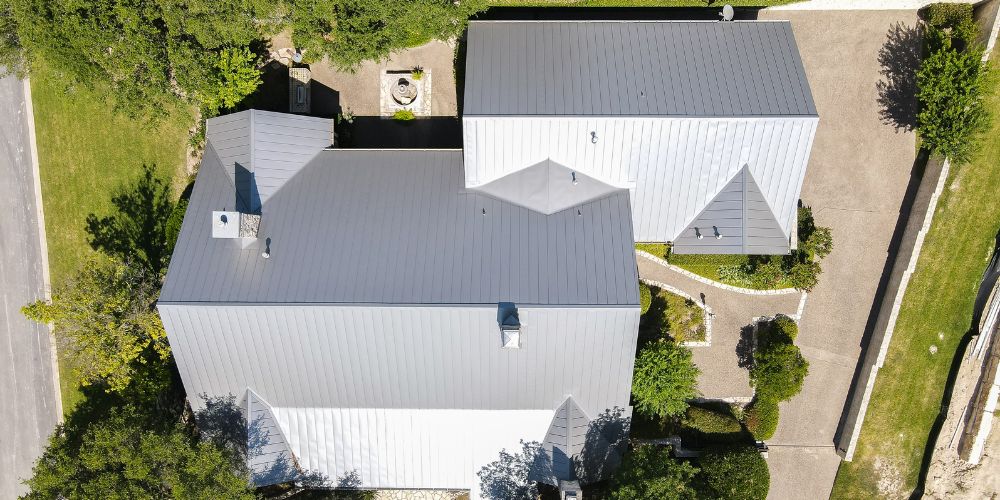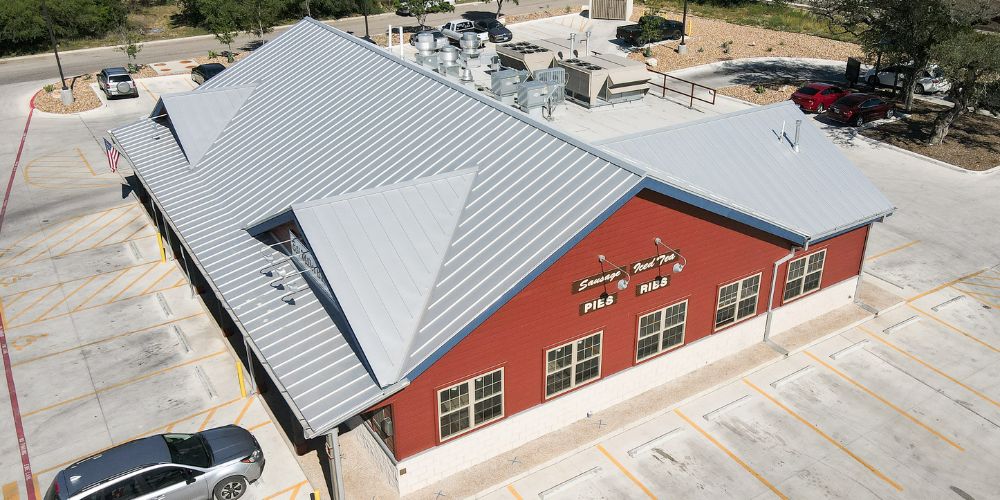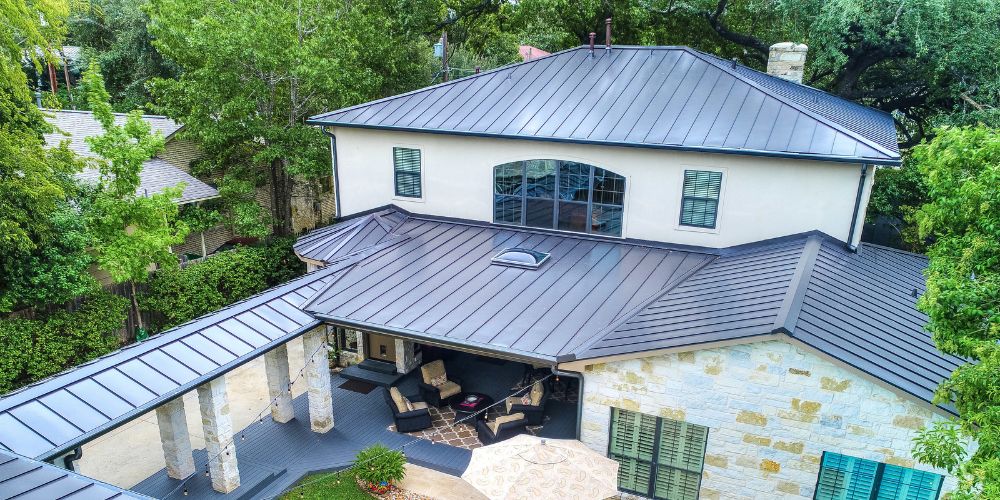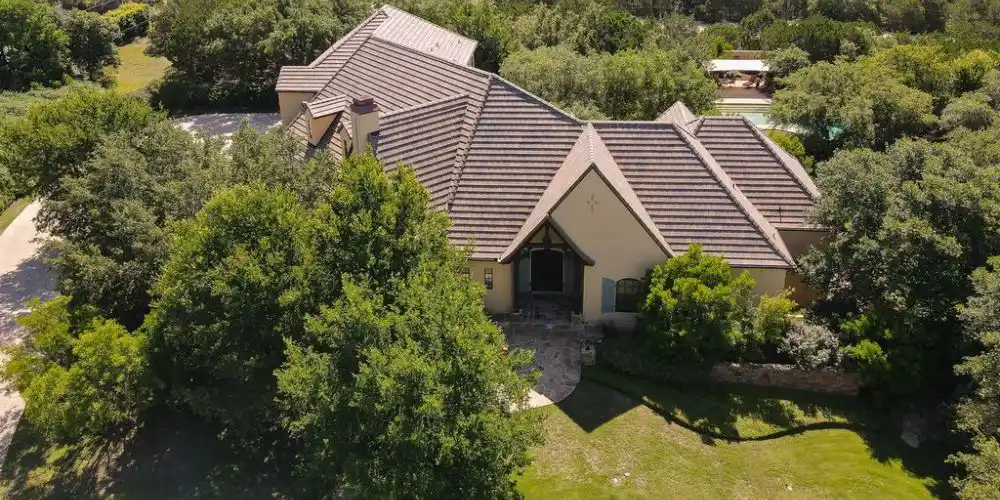Metal roofs have gained immense popularity due to their durability, energy efficiency, and modern look. Unlike other roofing materials, metal roofing offers a long-term solution that withstands even the fiercest weather conditions. Available in various styles and materials, metal roofs are versatile for both residential and commercial properties.
What makes metal roofs even more appealing is their eco-friendliness. They are primarily made from recycled materials and can often be recycled again at the end of their service life. While the upfront costs may be higher than other roofing options, the long-term benefits and low maintenance requirements make metal roofs a smart investment for many property owners.
What is a Metal Roof?

A metal roof is a roofing system made up of metal pieces or tiles, either individual or interlocking. Highly valued for its long lifespan, exceptional strength, and energy efficiency, a metal roof is often chosen for residential and commercial buildings.
Metal roofing materials are designed to withstand the harshest weather conditions, including heavy rain, snowstorms, and strong winds, making them ideal for high-risk areas. These roofs are typically made from durable materials like steel, aluminum, copper, or zinc alloys, each offering unique advantages and characteristics.
Types of Metal Roof Materials
Steel Metal Roofs
Steel is one of the most commonly used metal roofing materials today, prized for its strength, durability, and versatility. It often comes coated with zinc (galvanized), or with a protective layer of aluminum and zinc, to enhance rust and corrosion resistance.
- Pros: Strong, durable, and cost-effective.
- Cons: Prone to rust if not properly coated.
Aluminum Metal Roofs
Aluminum is a lightweight metal roofing material known for its excellent resistance to rust and corrosion, making it particularly suitable for coastal regions where saltwater exposure is a concern. Despite being lighter than steel, aluminum offers excellent durability against harsh weather conditions.
- Pros: Lightweight, rust-resistant.
- Cons: More expensive than steel.
Copper Metal Roofs
Copper is considered a premium roofing material, admired for its unmatched beauty and durability. Over time, copper develops a light green patina, adding character and elegance to the roof. When properly installed, a copper roof can last over a century with minimal maintenance, making it a valuable long-term investment.
- Pros: Extremely long-lasting, aesthetically pleasing.
- Cons: Expensive, prone to discoloration over time.
Zinc Metal Roofs
Zinc is renowned for its self-healing properties, making it a durable and sustainable roofing material. When scratched or damaged, zinc forms a natural patina that restores the surface, ensuring the roof remains both attractive and long-lasting.
- Pros: Long-lasting, low maintenance.
- Cons: High cost.
Tin Metal Roofs
Although not as common today, tin has been used in roofing for its lightweight and corrosion-resistant properties. Traditional tin roofs were typically made from rolled steel coated with tin plates. While modern tin roofs are often replaced by aluminum or galvanized steel, the classic tin roof still offers durability and a nostalgic charm, particularly in historic restorations or rural projects.
- Pros: Durable, rust-resistant.
- Cons: Uncommon, requires frequent maintenance.
Also Read: Guide to Choosing the Best Roofing Material
Different Styles of Metal Roofing
Corrugated Metal Roof
Corrugated metal roofs are characterized by their wavy pattern, making them both robust and durable. Traditionally a staple in industrial and agricultural applications, these roofs have recently gained popularity in residential settings where a rustic look is desired. The lightweight panels are easy to install, making them a cost-effective option for many property owners.
- Pros: Strong, durable, cost-effective, and easy to install.
- Cons: The wavy design may not suit all architectural styles.
Standing Seam Metal Roofing
Standing seam metal roofing features long, upright panels that are connected at their seams, giving the roof a smooth and modern appearance. One of the key benefits of this style is its durability and excellent weather resistance, as the raised seams prevent water infiltration. Standing seam roofs are commonly chosen for both commercial and residential properties where clean lines and a contemporary look are desired.
- Pros: Durable, weather-resistant, sleek, and modern appearance.
- Cons: Typically more expensive than other metal roofing styles due to the materials and installation process.
How much Metal Roof Cost
The cost of metal roofing is influenced by factors such as the type of material, style, and the complexity of the installation process. On average, a metal roof installation can range from $6 to $12 per square foot, which includes both materials and labor. For example, the more affordable options, like corrugated steel, can cost between $6 to $7 per square foot, while more premium materials may reach $10 to $12 per square foot.
While metal roofs have a higher upfront cost compared to traditional asphalt shingles, they offer significant long-term benefits. Metal roofs can last 40 to 70 years, which means you won’t need to replace them as often as other roofing materials. Additionally, their energy efficiency can lead to substantial savings on heating and cooling costs over time.
It’s important to work with reputable roofing companies to ensure you get the best value for your investment. Mangold Roofing is a top choice for metal roofing services, known for our expertise and commitment to quality.
We offer a wide range of metal roofing materials and styles, along with top-notch installation services tailored to your needs. A metal roof installed by Mangold Roofing can be trusted to provide long-lasting durability and excellent performance for years to come.




